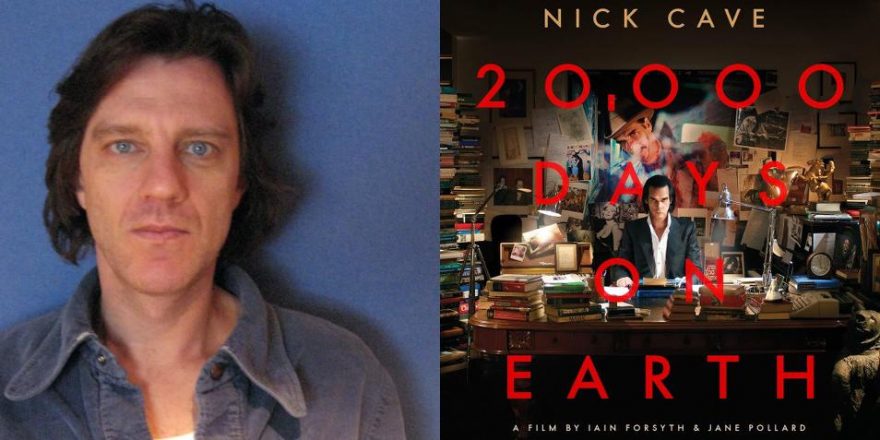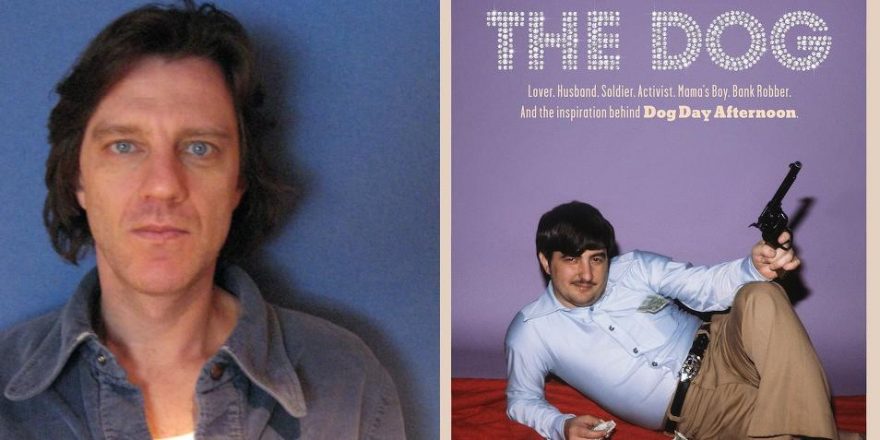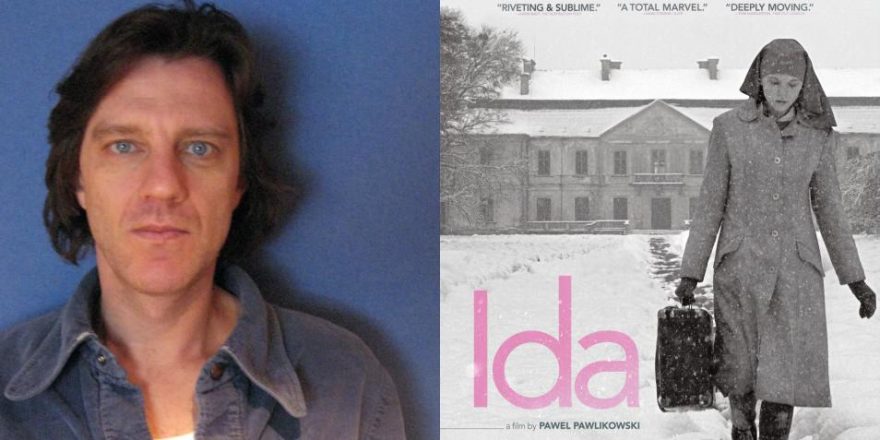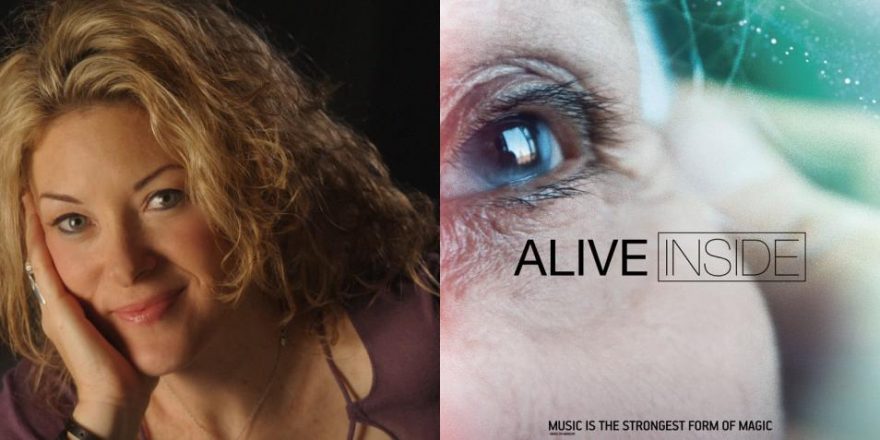A couple of things this film isn’t. It isn’t a film that records Nick Cave’s 20,000th day on Earth. In fact, that undertaking might well have been rather boring, given the glimpses the film offers us of the stable and quotidian domesticity of the Cave household in the cozy seaside town of Brighton, England. The title is a formal conceit: this is a film pretending to be a day in the life of Nick Cave without trying too hard to convince you that it really is. As such, its artifice is not only transparent but risks being redundant. It also unwittingly speaks of another disconnect — the growing distance between the artist and the diabolical worlds he has created in his songs. That’s a theme barely touched upon by the film, one which the artificial day conceit only serves to reinforce. That is perhaps the main disappointment in a film of many pleasures — and artifices.
Because 20,000 Days on Earth isn’t a documentary either, not in the traditional sense, but then again, what good documentary is these days? While the directors, Iain Forsyth and Jane Pollard, do undertake some documenting of the life and work of Nick Cave, there is the inbuilt filter of the man himself (credited as a writer on the film) rigorously creating and controlling that portrait. Cave proclaims, accurately, that “memory is who we are,” and in the film he does his very best to control our memory of him and own his memory of himself.
So the film is best regarded as a creative, mediated self-portrait of an enormously talented songwriter and performer, determined to hang on to (and even extend) his mythology while still allowing real insights into his process, his talent and his personality. It may not be a day in the life of Nick Cave but you do get to spend quality time with him and he is splendid company, even as he moans about the English weather and watches Scarface (no surprises there) with his young sons. Freed from the conventions of the documentary form, there is also real artistry and thoughtfulness in the form of this film. Its images are carefully lit and composed to look almost like a theatrical production and that, in a sense, is ultimately what the film is: a one-man show in a mode of carefully controlled, heightened realism.
Cave spends an inordinate amount of time driving aimlessly around Brighton (he’s a surprisingly cautious and diligent driver), chauffeuring and bantering with names we know well — Ray Winstone and Kylie Minogue — and those we might want to know better, like Blixa Bargeld, a former guitarist in his band. Bargeld is a twitchy, prickly presence — who looks like he doesn’t want to be in the car any more than he wants to rejoin the Bad Seeds. The atmosphere between the two men makes for one of the most striking moments in the film and, as so often in rock & roll, it seems like a love affair between two men has gone sour, with mutual regret and hurt on both sides. I say “seems” because the film refuses to dig.
But Cave doesn’t seem to have the monstrous ego you might assume would accompany his artistically fruitful self-obsession and terrorize and exhaust his confederates. On the contrary, he comes across as a generous friend and collaborator, not least in cozy scenes with Warren Ellis, another — and still willing — Bad Seed. Ellis cooks up some eels and pasta for Cave with the same sort of dexterity and love he brings to the many instruments we see him play in the film, and tells funny stories about Nina Simone’s chewing gum — a gobbet of which he has collected. Alas, it is not the kind of film where he’s asked to produce it for the camera. But it is the kind of film where you’re happy to take his word for it — because his character has come through well enough for us to believe him.
There is truth here of a different kind — two middle-aged men displaying the sort of warm, unforced familiarity that produces great songs without the proverbial tension and hatred that younger men, less secure in their talent and friendship, might bring to a collaboration. In one of the best scenes of the film, there is genuine insight into their process together, where each man challenges and improves the work of the other as they will and coax a song into being. Another truthful glimpse you get of Cave in the film is perhaps the most surprising one: the uxorious — look it up, it’s a great, underused word — husband. Who knew? Women have been slaughtered and cruelly treated throughout Cave’s work and yet here is the real man, revealed as a devoted, adoring husband, still besotted with his wife. His voice changes when he talks about her and there is one swooningly romantic passage in the film where he describes seeing her for the first time — and no trace of irony here from the man who once sang “I’m Gonna Kill That Woman.”
She looks like the dominant power in the Cave household and thus we don’t get to see much of her at all — she is conspicuously and, one suspects, adamantly absent, hiding herself under the pillows as the film opens on their marital bed on this fictional day, and then seen only briefly as an icy, exquisitely beautiful woman in a couple of photographs. But the film is sensitive enough to convey the importance of this bond and it explains a lot about the man we meet in the film, as compared to the man I saw half-naked on stage in London in the early ’80s fronting The Birthday Party. That man was dangerous, scary, out of control, yelling out a song about an insect called, not ironically, Nick the Stripper. Cave talks of this man and the junkie he became as if he were a stranger and the film, notwithstanding a prolonged and fitfully revealing session of Cave on the psychiatrist’s couch, fails to challenge him on it, other than to hint at the aforementioned good influence of his wife.
But perhaps his career offers its own explanation. It’s another testament to Cave’s fundamental good character and common sense (which the film reveals in abundance) that he didn’t pursue this early career into an early grave, like so many other doomed singers flirting with death as a self-fulfilling prophecy. Cave preferred to channel himself into the self-destructive and murderous characters in his narrative song-writing with the Bad Seeds and to enact them more safely on stage. Nor has he become a self-parody or embalmed his creativity with repetition, as the film makes convincingly clear. There is wit and self-awareness in Cave’s gothic world of song, in his stage persona and, indeed, in the adjunct persona he has created for this film. Cave has grown up and grown older gracefully without diminishing himself or his output. Where once there was petulance and rebellion, now there is the wisdom he earned from them.
In all these respects, this film will be essential and rewarding viewing for the most casual admirer or ardent fan. I have been episodically both, most intensely around the time of the Bad Seeds’ record The Good Son, when my own life was spiraling out of control with some of the same addictions of Cave’s younger self, only for this dark and tender music then to become entwined with the courtship of my own wife, straddling as it did both despair and redemption. I’m sure many of Cave’s admirers have that kind of history with him and that is why we cherish him so much. He is that kind of artist — like Dylan, like Leonard Cohen, like Bowie, like Morrissey, inveigling his songs into crucial moments of our lives and defining them for us, standing for the good and for the bad and making each more interesting and endurable.
Almost every great observational portrait of a performing artist that I can think of reveals a temper, a frustration, an outburst — moments of unguarded truth that sharply reveal character and situation. Think of The Stones being confronted with the Maysles brothers’ Altamont footage in Gimme Shelter, Dylan’s brutal putdown of an earnest journalist in Don’t Look Back, Leonard Cohen in tears with stage fright in Tony Palmer’s little-seen but highly recommended Bird on a Wire.
There are none of these epiphanies in 20,000 Days. In fact, I’m not sure those moments are possible or permissible any more, even if we had artists worthy of such scrutiny (Cave is a rare exception). We have all become so knowing, not least the performing artists themselves. So let us make do with 20,000 Days, where the truth does abide, even as it remains vigilantly guarded.







